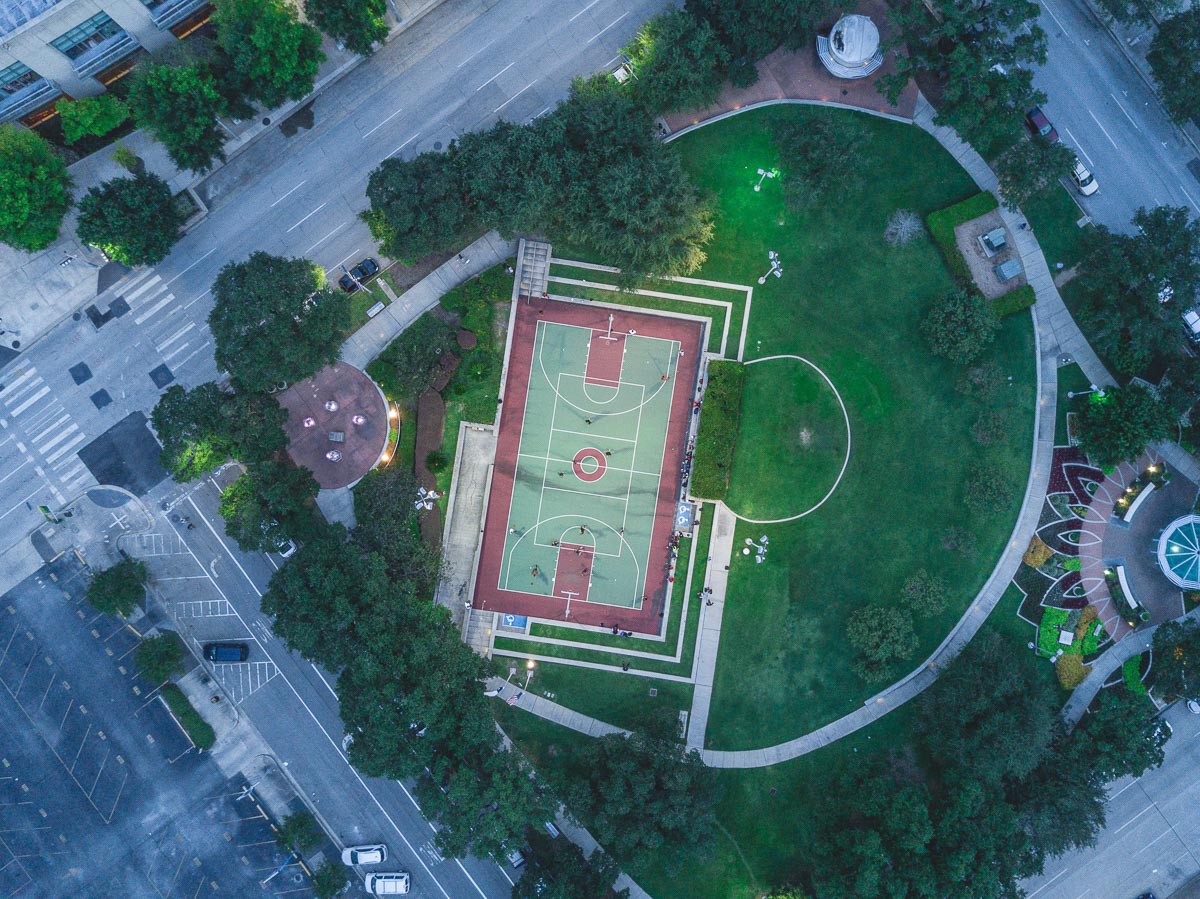Parks in Houston must be so much more than just green space, but instead, a place where people can find "refuge so people can decompress."
To create these refuges for neighborhoods, the City of Houston Park and Recreation Department must first obtain land for Houston's green spaces. Then, planners begin the design process.
"We work so hard and we're in traffic so much. We want the parks to be a refuge so people can decompress and sit in the green space," said Lisa Johnson, division manager for the General Service Department for the City of Houston.
The first step following the acquisition of land is gathering community opinions for what amenities neighbors want in their area park. "Every neighborhood being different, we want to target the residents to see what their priorities are and how they want the park to be in their community," Johnson said. "Qualities we do want are durable materials, good visibility — we try to make it as easy as possible for the staff to maintain — and not to create a nuisance for the neighborhood."
A park's amenities list, according to Johnson, is typically the same: walking trails, playgrounds, but most recently, dog parks and restrooms have been added to the wish lists. Johnson understands that people want to stay longer at the parks, which is why restrooms are a necessity, but the city has "gotten away from providing public restrooms in parks due to maintenance issues, security issues and costs."
The process of ensuring a new park isn't a nuisance for a neighborhood starts with community input. Johnson says she and the city first reach out to council members to get in contact with community stakeholders and nonprofits in order to learn what the people in the area want out of a park. Furthermore, she encourages people to go to city council meetings to share their opinions during the meeting's public comment portion.
"We’re really proud we aren’t going around and cookie-cutting our playgrounds. We try to make them individual and different and we know people travel," Johnson said. "We want to serve the neighborhood, but if it’s attractive and nice, people like to experience parks in other parts of the city."
While funding can be a roadblock in some designs of parks, Johnson says this doesn't always stop them from thinking outside the box and away from a traditional park design.
"The older designs, it was just kind of reactionary and they would build one amenity and then they really wouldn’t really master-plan with another development. I think we’re doing a much better job trying to look at a long-term vision – even if we don’t have the funding to build it all today – so that we can build for that future vision. We look a lot closer at the connectivity of the elements," Johnson said.
One of the greatest examples of the connectivity of Houston parks comes from the Bayou Greenways 2020 project. The project aims to connect the hike and bike trails along several of Houston's bayous. While the main goal is to connect the hike and bike trails, along the way, the trails are connecting parks with each other. In the future, Memorial Park will connect to Buffalo Bayou Park, then on to Stude Park and up to T.C. Jester Park.
When it comes to how parks are "designed to flood," Johnson notes that it's more in Houston's nature for the land to retain water since it's a natural swampland. "Half of the city’s parks are in the hundred-year floodplain, but we do have a lot of parks — just by the nature of them — that are soggy and wet a lot of the time. I think it needs to be public education that we want to keep that space green. It doesn’t mean we can’t go in there at some point in life to design it better, but I don’t think it’s a bad thing that we have parks that just hold water and are green."
Furthermore, the size of the park also has to be considered when designing land to retain water in an organized way or not. "People are coming to us and saying that in the future we should use the parks as retention, but when you have 500 acres, that's easy to do retention that really works, but when looking at smaller parks — a smaller footprint — it's a little more problematic."

